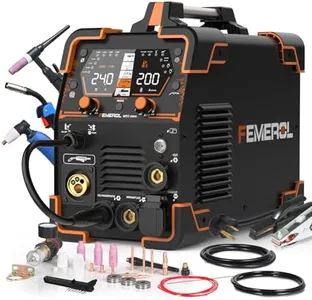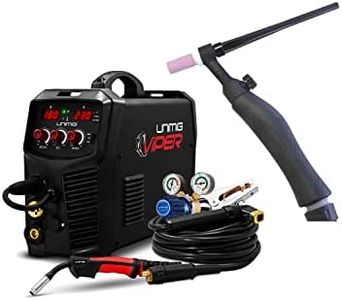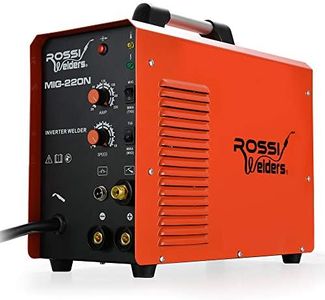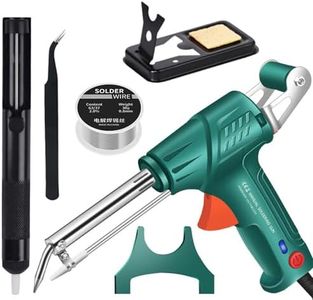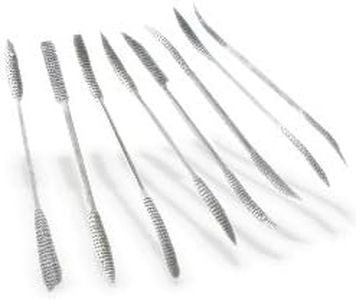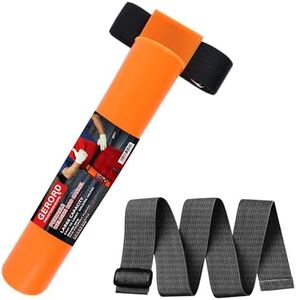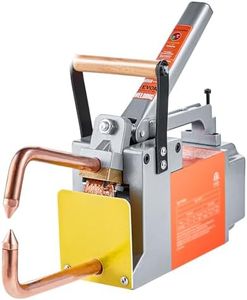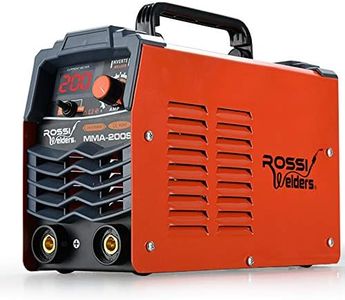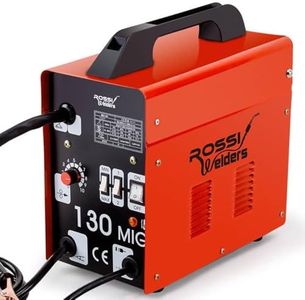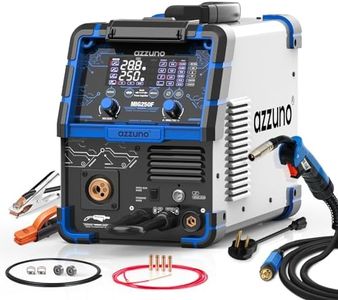We Use CookiesWe use cookies to enhance the security, performance,
functionality and for analytical and promotional activities. By continuing to browse this site you
are agreeing to our privacy policy
10 Best Aluminum Welders
From leading brands and best sellers available on the web.By clicking on a link to a third party's website, log data is shared with that third party.
Buying Guide for the Best Aluminum Welders
Choosing the right aluminum welder can make a big difference in the quality of your work and how enjoyable the process is. Aluminum welding is a bit more specialized than welding other metals due to aluminum’s unique properties like its softness and higher conductivity. To make a smart choice, it's crucial to understand the core features and specifications of welders built to handle aluminum, and think about what kind of projects you plan to tackle—whether that’s occasional repairs or heavy-duty fabrication.Welding Process Type (MIG, TIG, Stick)The welding process is about how the machine creates the weld. For aluminum, TIG (Tungsten Inert Gas) is often preferred because it allows for the most control and makes clean, precise welds; it's ideal for thinner aluminum and fine work. MIG (Metal Inert Gas) is faster and easier for beginners, and is effective for thicker aluminum pieces, but may not look as neat. Stick welding isn't commonly used for aluminum as it’s hard to get good results unless you have a lot of experience. To decide, think about the type and thickness of aluminum you’ll work with and your skill level—TIG for detail-oriented, fine projects and MIG for larger, quicker jobs.
AC/DC CapabilityAluminum welding typically requires a welder that can use alternating current (AC). Direct current (DC) is more common for welding steel or stainless steel. AC is crucial because it helps remove the natural oxide layer that forms on aluminum, leading to a clean weld. When shopping, check if the machine offers AC (or can switch between AC and DC). If you plan to weld only aluminum, AC is a must-have; if you want a versatile welder for other metals too, look for one that can easily toggle between AC and DC.
Amperage RangeAmperage determines how much power the welder puts out and affects what thickness of metal you can weld. Low amp settings are for thin aluminum, while higher amps handle thicker materials. Welders with a broad amperage range are more flexible for different projects. If you'll be working primarily on car body panels or small repairs, a lower maximum amperage is fine. If you plan to work on trailers, boats, or structural applications with thicker aluminum, you'll need a higher top end.
Duty CycleDuty cycle is the percentage of a 10-minute period the welder can operate at a specific setting before it needs to cool down. For example, a 30% duty cycle at a given amperage means you can weld for three minutes, then let the machine rest for seven. A higher duty cycle is important for longer or more continuous welds. If you're doing brief spot welds or repairs, a lower duty cycle may be sufficient. For longer projects, especially on thick aluminum, you'll appreciate a machine with a higher duty cycle.
Portability and SizeThe size and weight of a welder affect how easily you can move it around your workspace or take it to job sites. Some aluminum welders are small and light, designed for home garages or small shops, while others are heavy-duty and bulkier for industrial use. If you’ll be welding in different locations or only have a small workspace, prioritize a model that's compact and portable. For stationary setups or bigger projects, larger, more stable machines may be suitable.
User Interface and ControlsHow easy it is to set amperage, switch between AC and DC, and adjust other settings impacts your welding experience. Some machines offer simple knobs and switches, while others have digital displays and more fine-tuned control. If you’re newer to welding, a welder with clear, straightforward controls will be easier to use. More experienced users or those who want to experiment with advanced settings might appreciate more customization and features.
Included Accessories and Torch TypeAluminum welding typically benefits from a quality torch—especially for TIG welding, which often uses a water-cooled torch. Check if the machine comes with a suitable torch, regulator, hoses, and foot pedal (for adjusting amperage on the fly). A comfortable, well-matched torch can make your work easier and produce better results. Decide what accessories you need based on the complexity and frequency of your projects.

